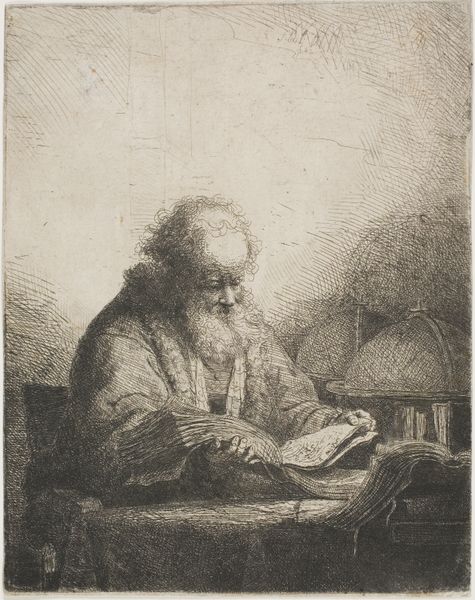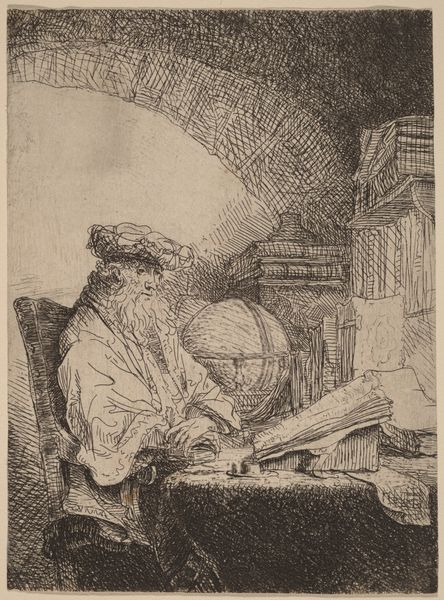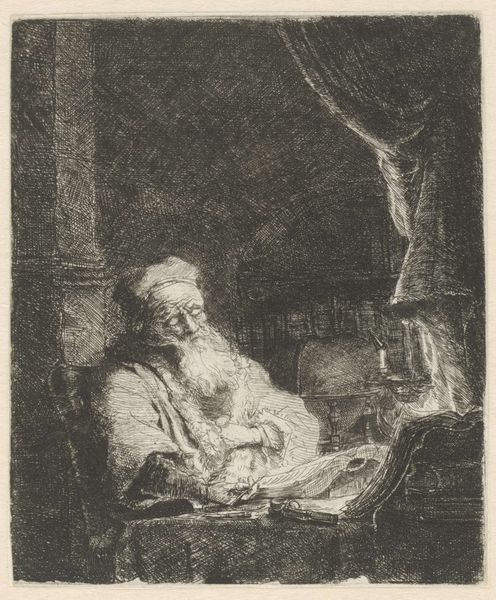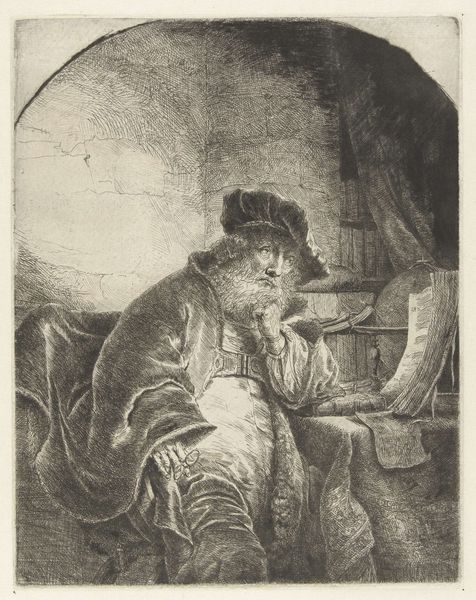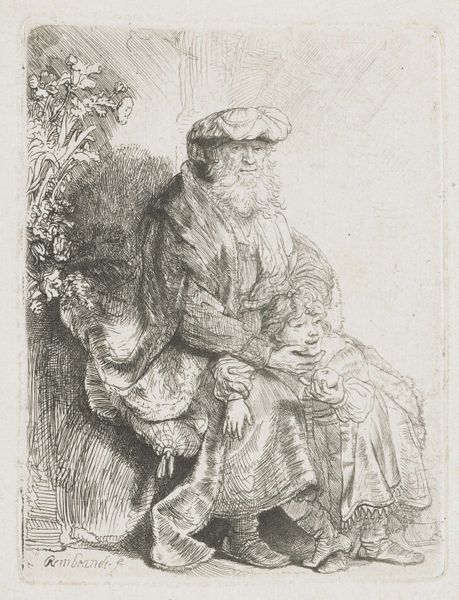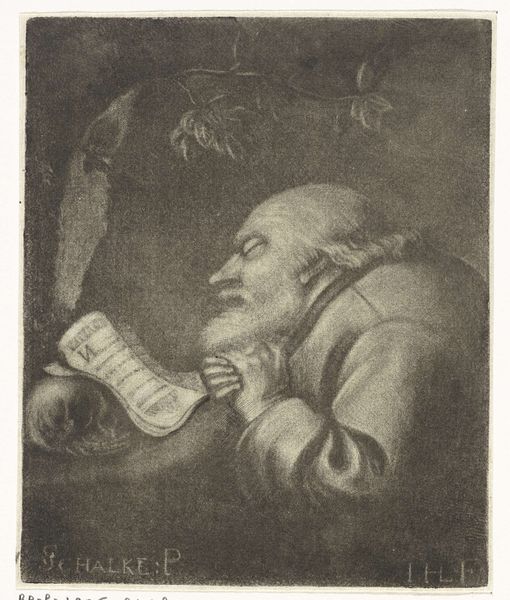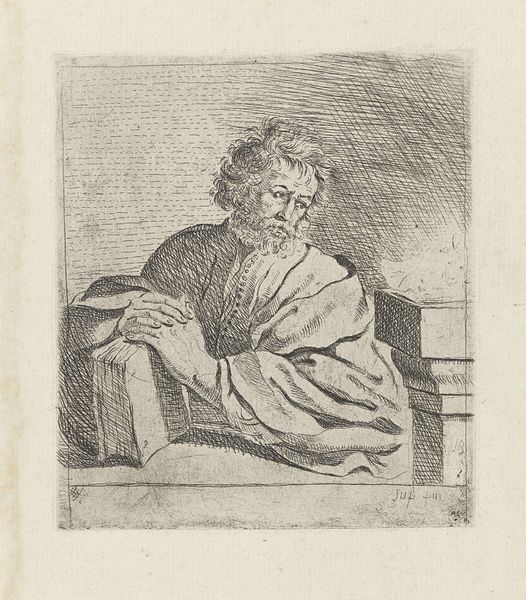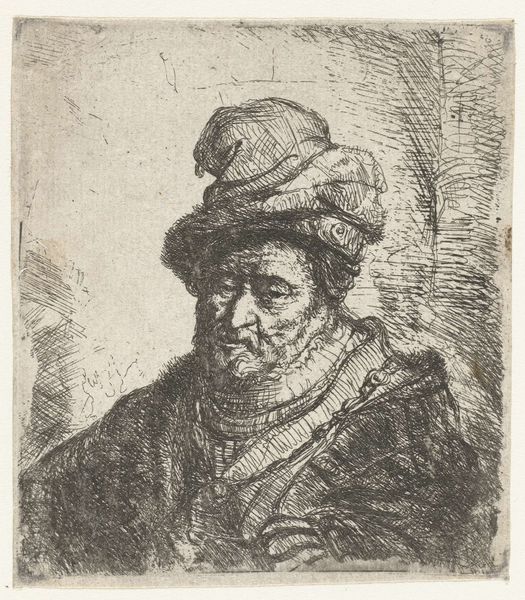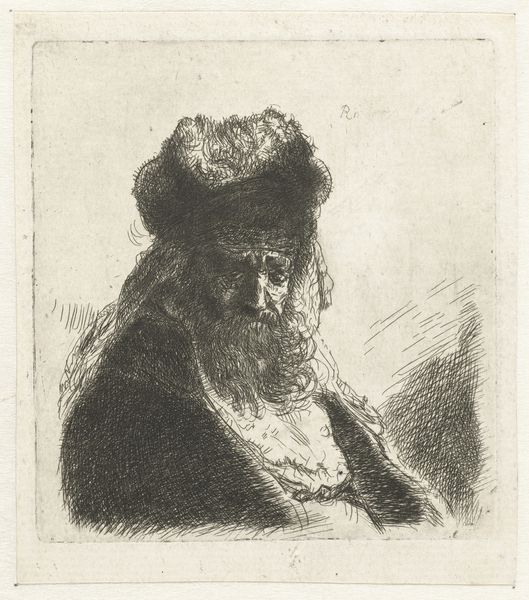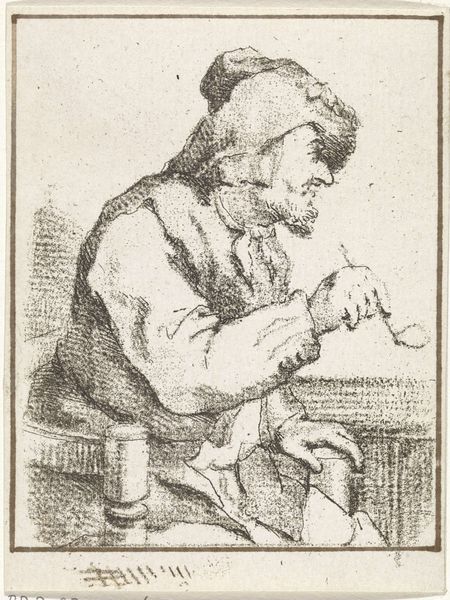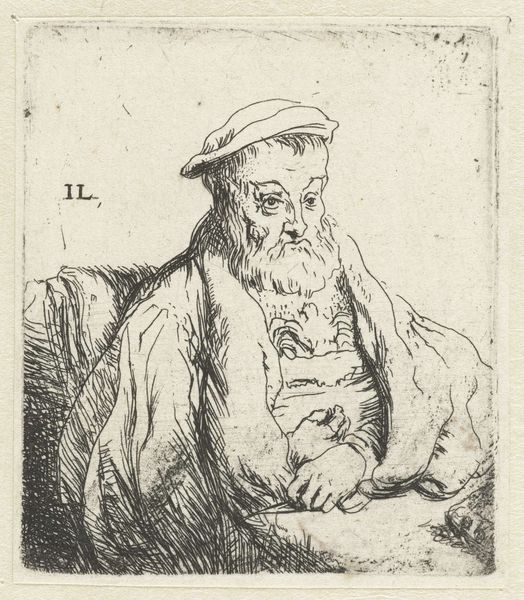
drawing, print, etching
#
portrait
#
drawing
#
baroque
# print
#
etching
#
figuration
#
line
#
history-painting
Dimensions: height 210 mm, width 165 mm
Copyright: Rijks Museum: Open Domain
Editor: Here we have Ferdinand Bol's etching, "Filosoof," from 1642. I'm immediately struck by the intricate lines, which give a real sense of age and wisdom to the figure. It's also quite contemplative. What do you see in this piece from your perspective? Curator: Well, Bol was working within a very specific socio-political context in the Dutch Golden Age. Prints like these were affordable and circulated widely, contributing to the growth of a burgeoning public sphere. Who do you think this philosopher represents, and how might he have been received by viewers in the 17th century? Editor: He feels like a sort of universal scholar or wise man. Given that prints were more accessible, could it be that Bol aimed to democratize access to wisdom and learning, portraying the life of the mind as worthy for all? Curator: Precisely. The figure's study isn't ostentatious, suggesting a value placed on simple living alongside intellectual pursuits. Notice the globe in the background. It hints at explorations and discoveries—core elements of the Dutch Republic's identity. But why choose to depict a philosopher rather than a merchant or military figure, more typical emblems of Dutch success? Editor: Perhaps Bol wanted to subtly critique the overemphasis on material wealth and colonial power by highlighting the value of philosophical reflection. He almost seems a deliberate contrast to the usual symbols of Dutch power at the time. Curator: That’s a keen observation. Bol might be gently challenging the dominant narrative of his time. The figure embodies quiet contemplation in a society driven by commerce. Do you think a piece like this has political undertones in that environment? Editor: Definitely, depicting intellectual life itself becomes a statement. Thank you, I see how it uses subtle visual cues to engage with bigger ideas about Dutch society. Curator: And hopefully you now appreciate how prints played a vital role in disseminating those ideas, shaping public discourse through readily available imagery.
Comments
No comments
Be the first to comment and join the conversation on the ultimate creative platform.
